
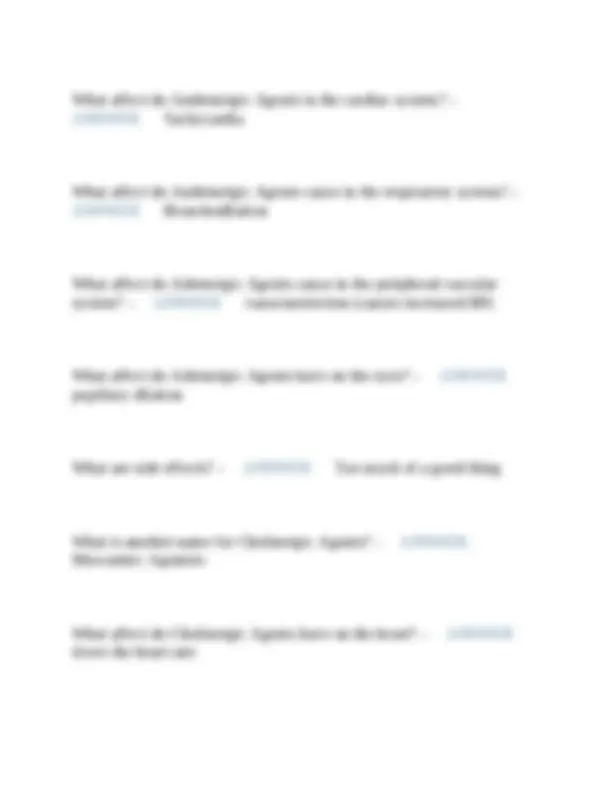
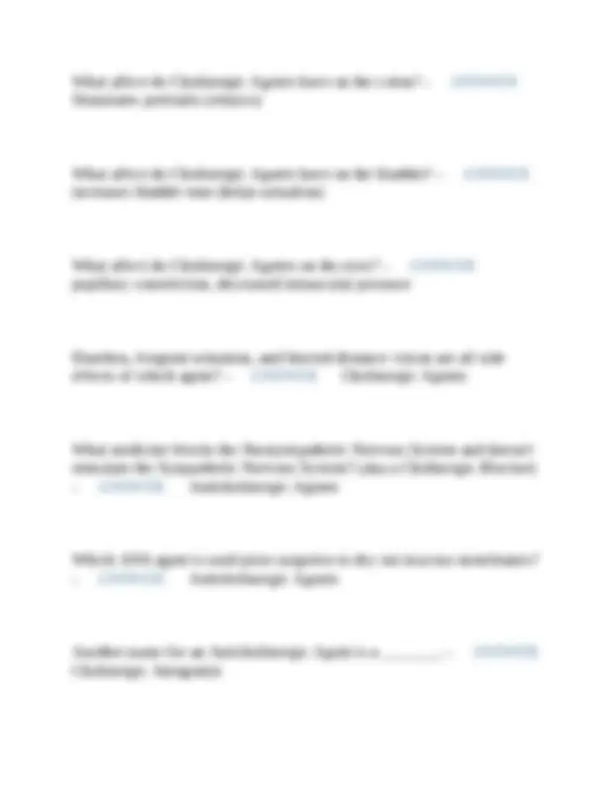
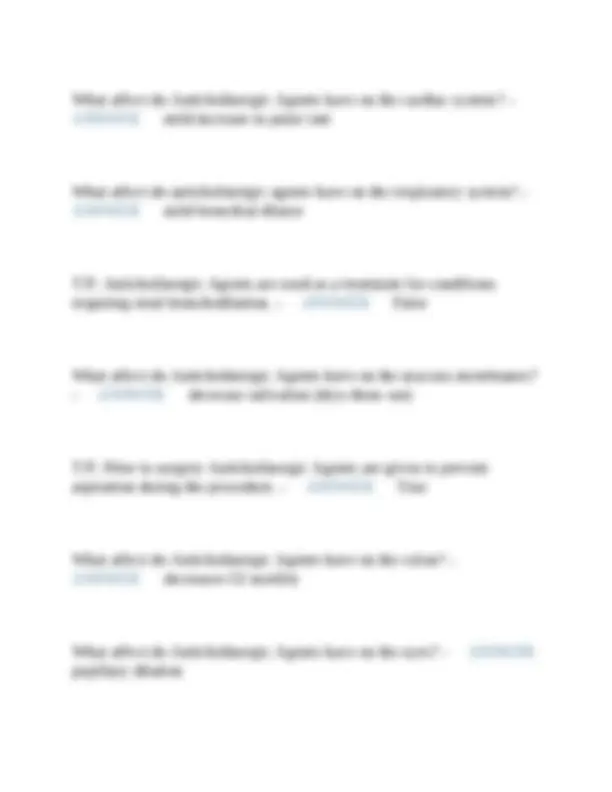
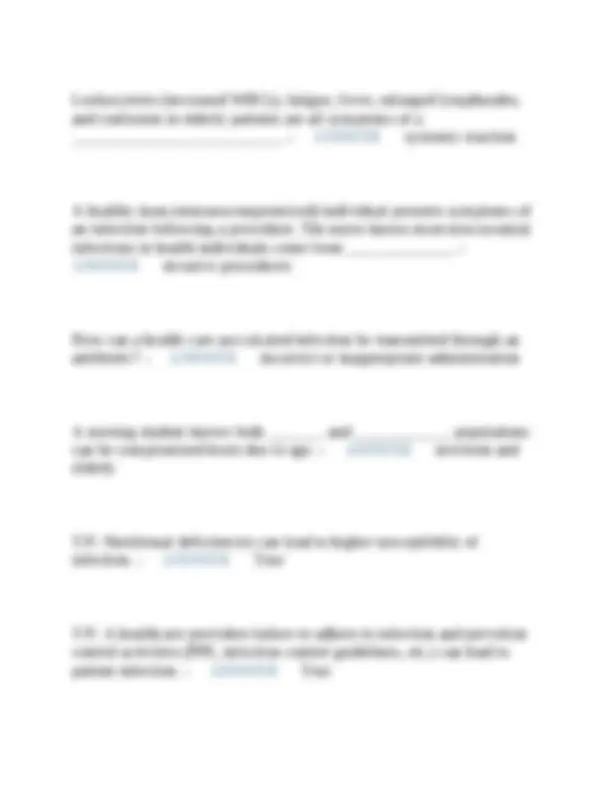
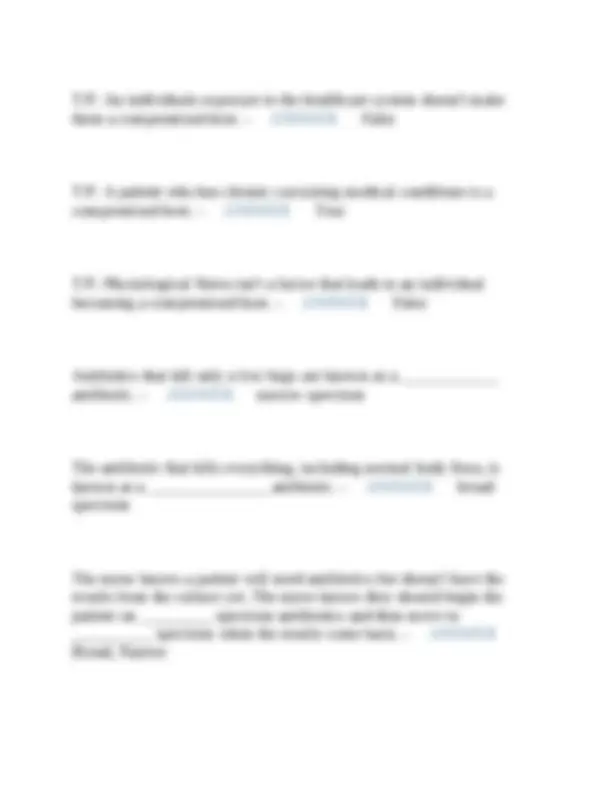
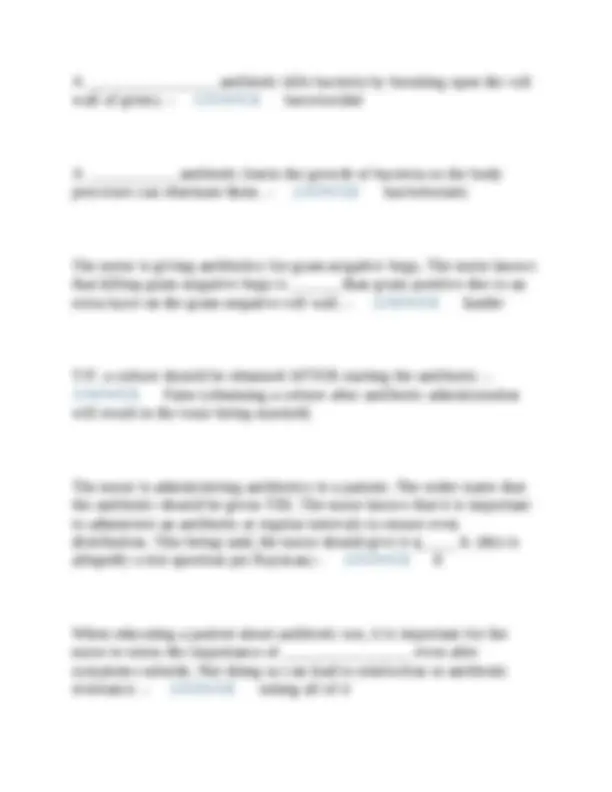
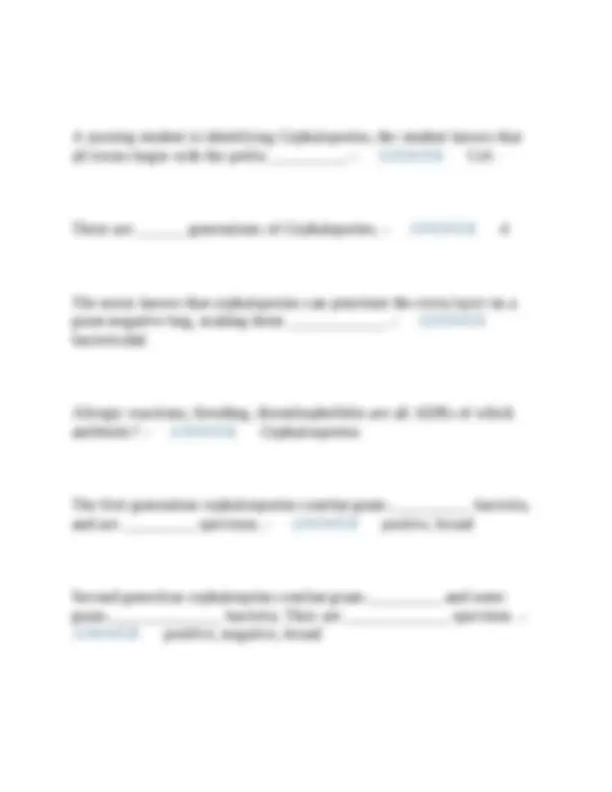
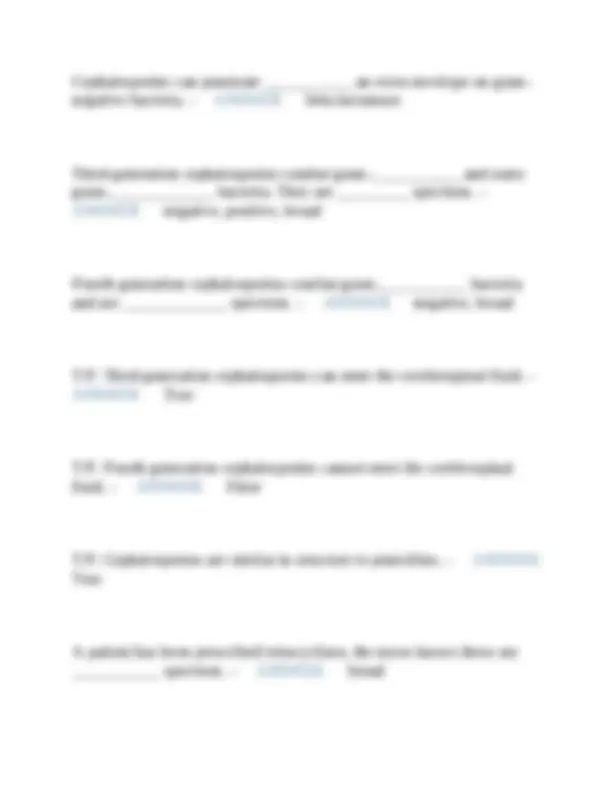
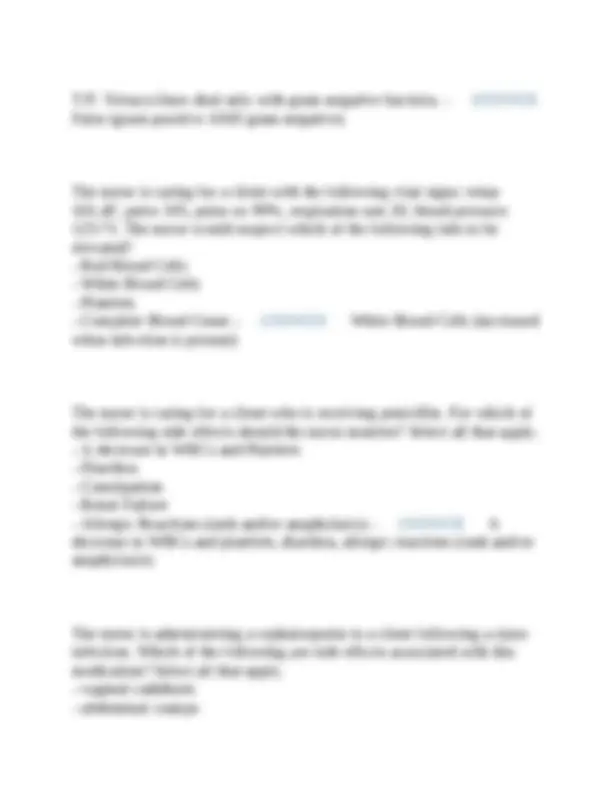
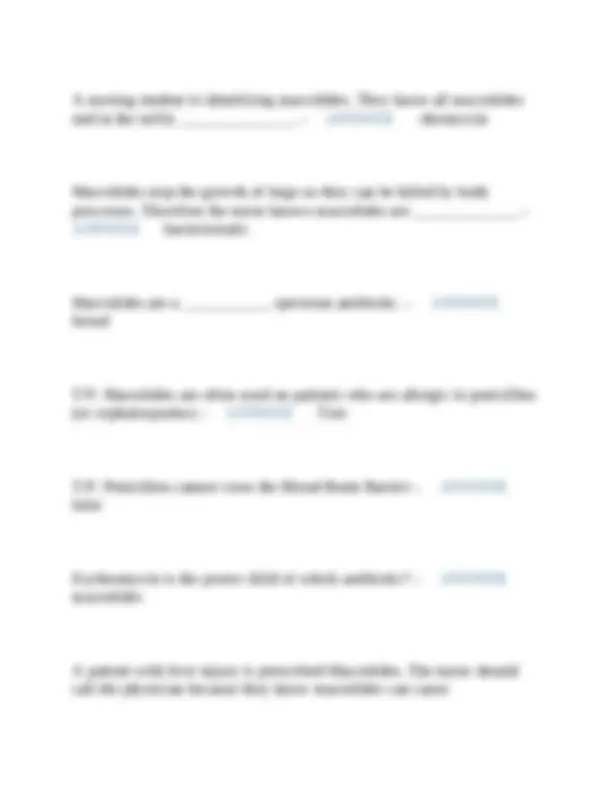
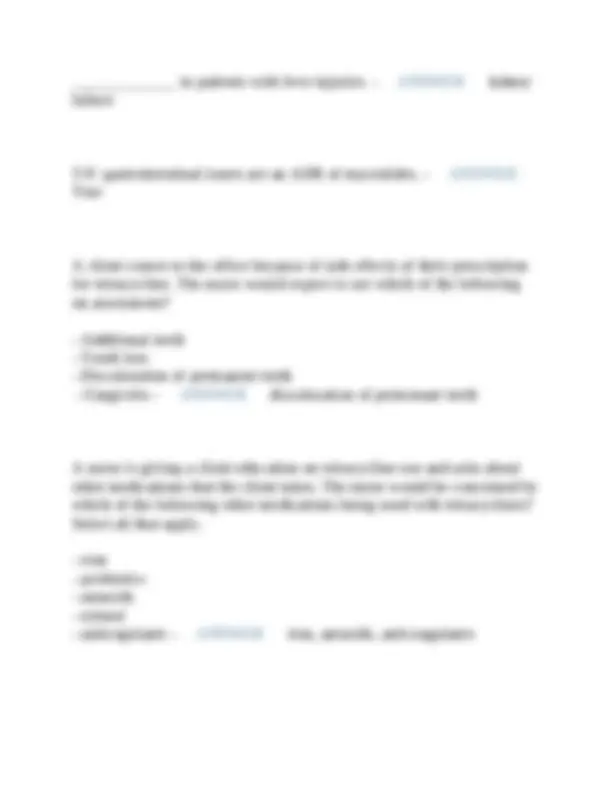
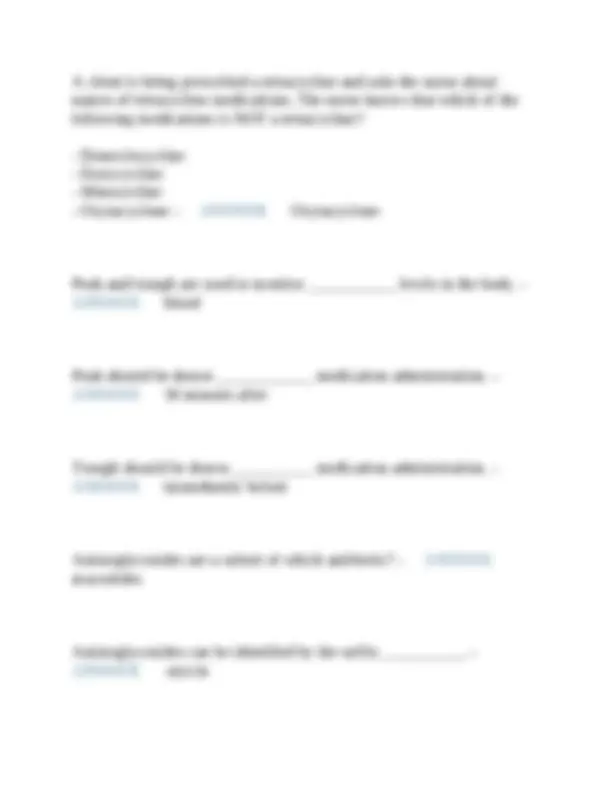
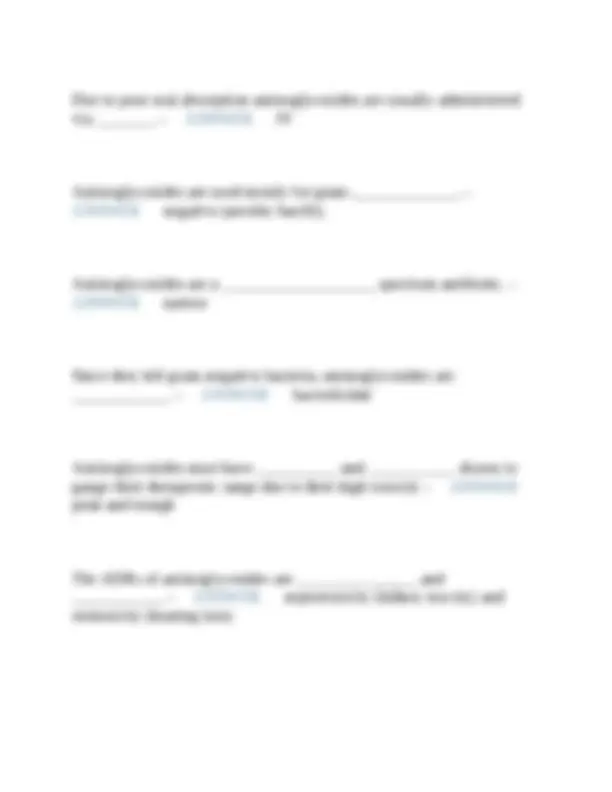
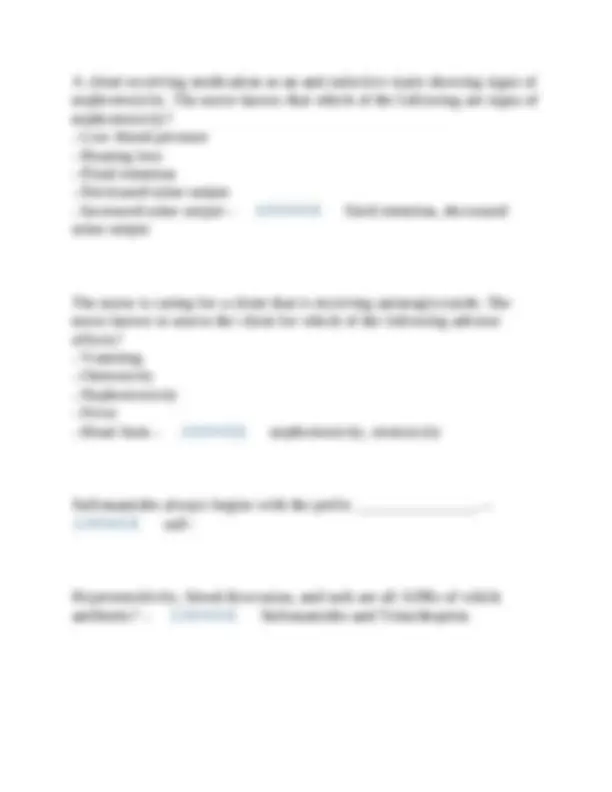
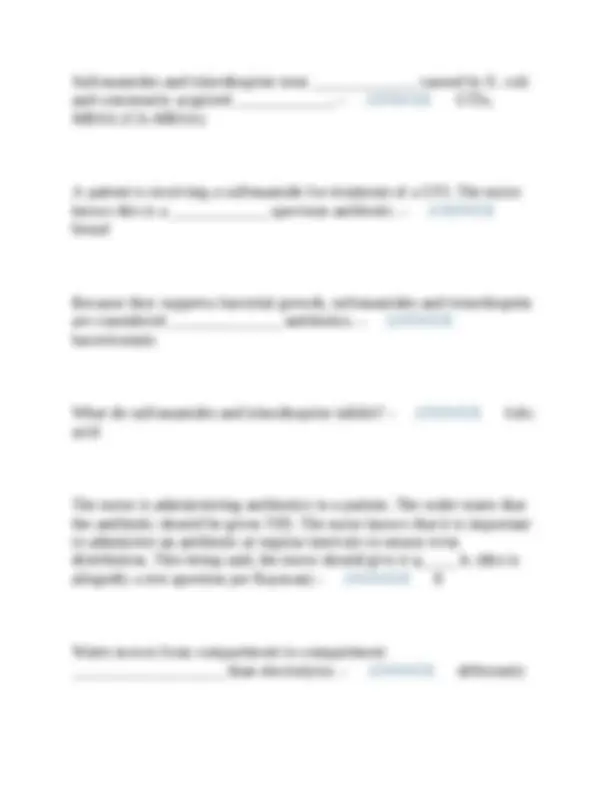
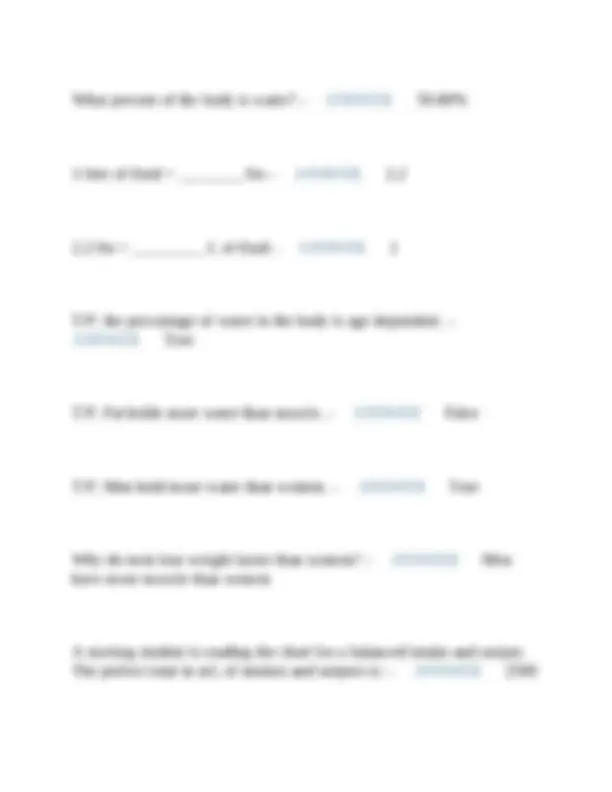
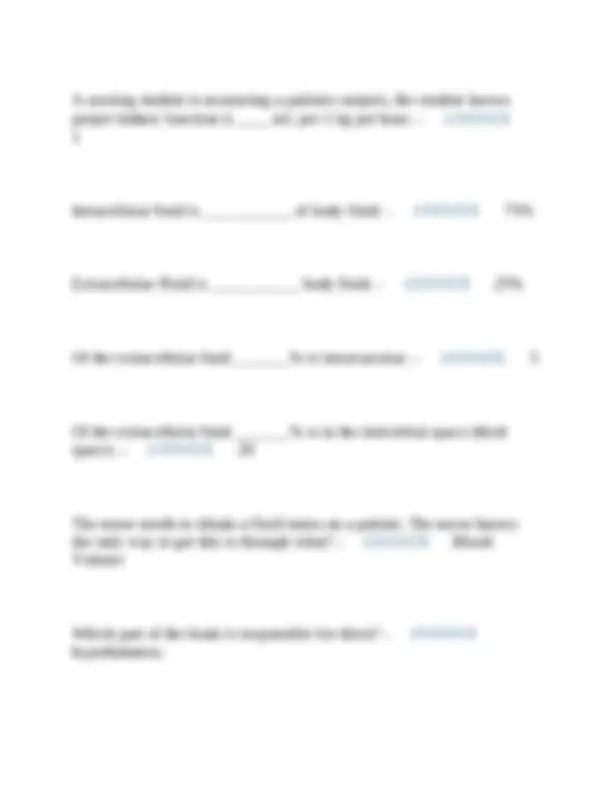
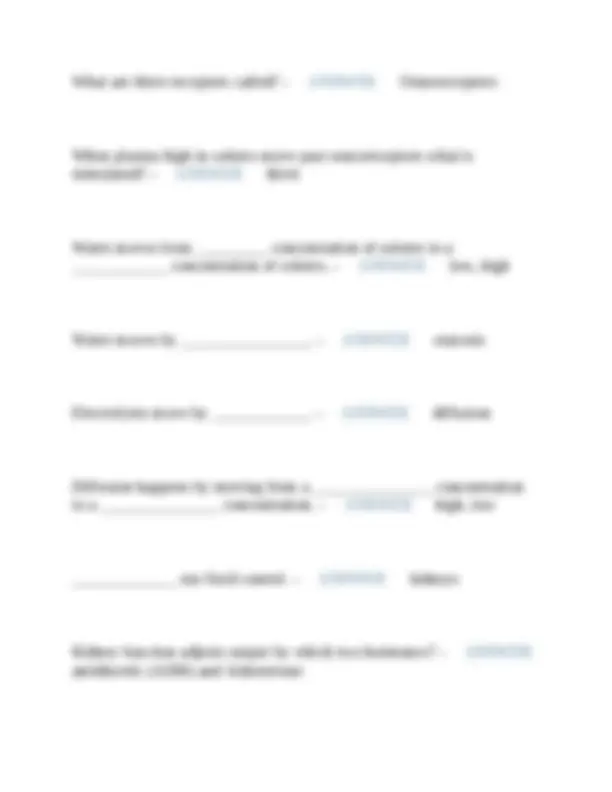
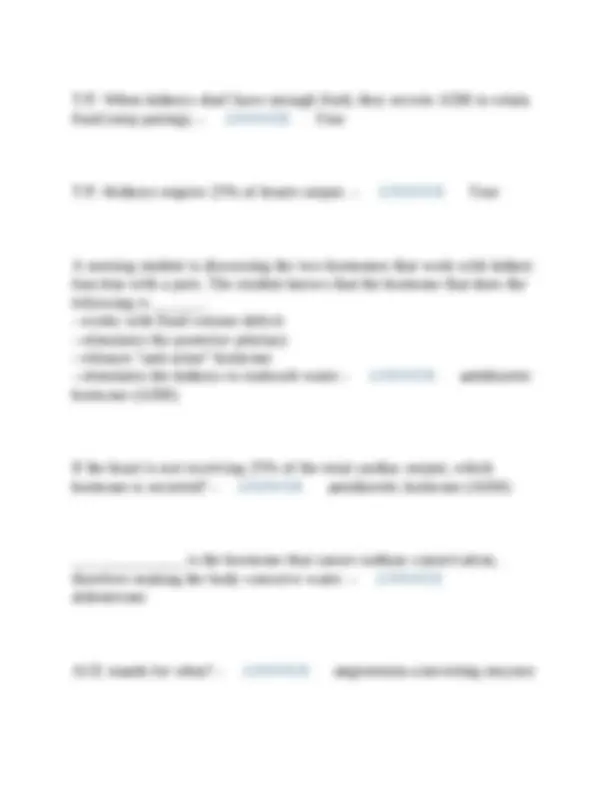
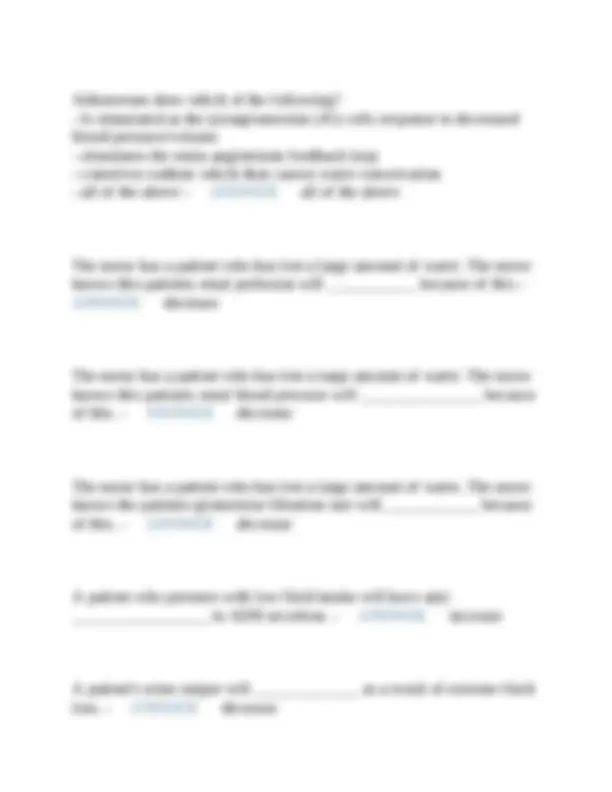
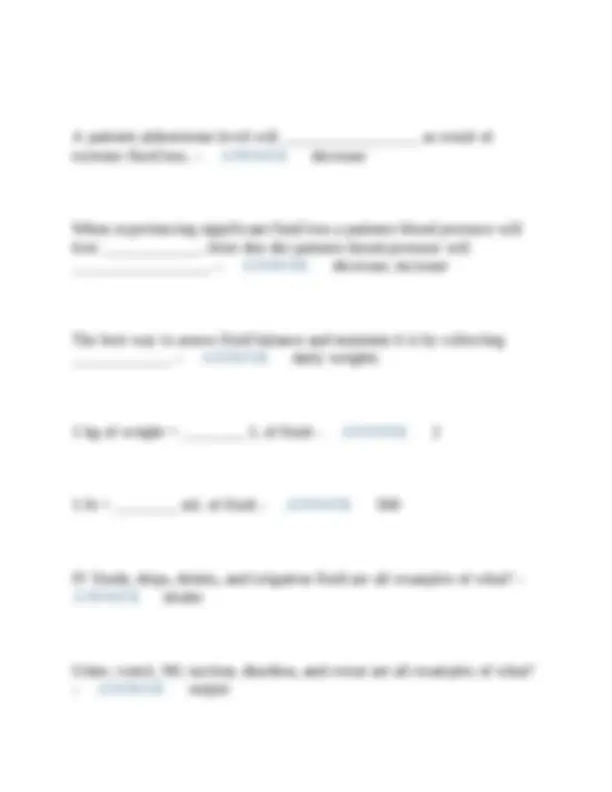
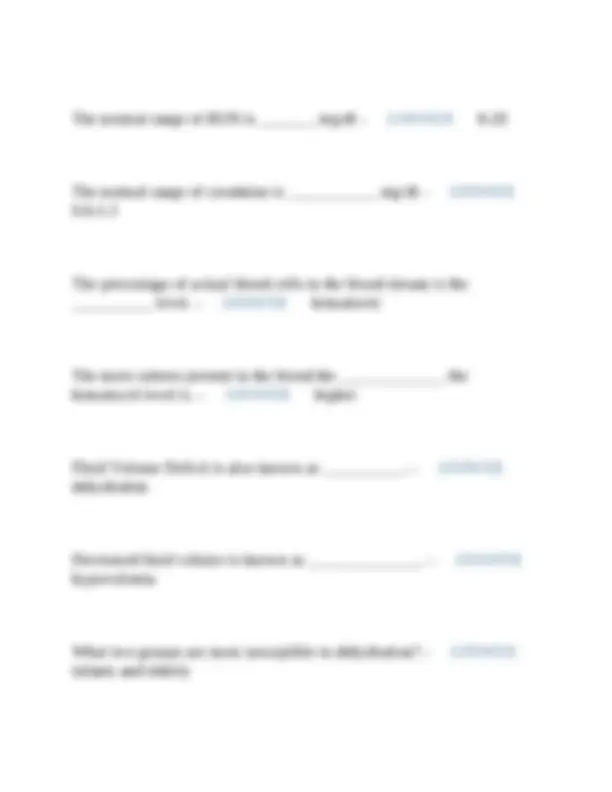
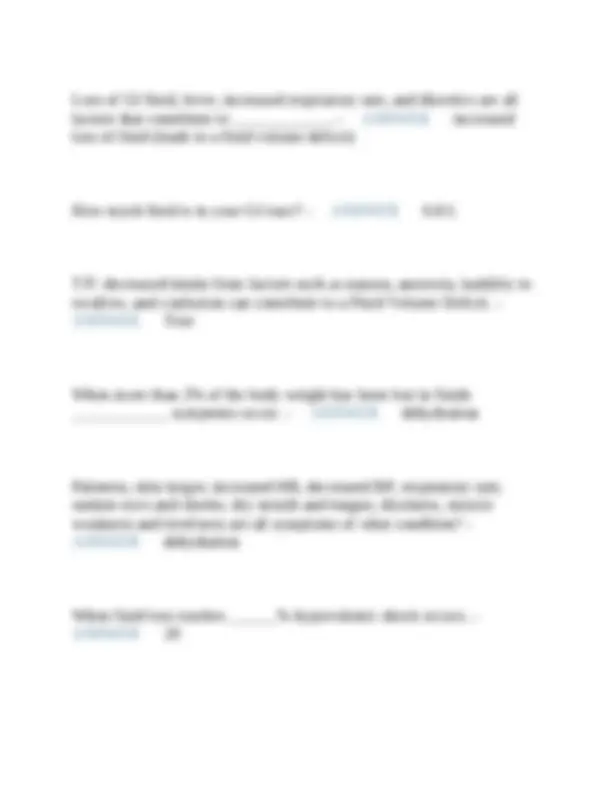
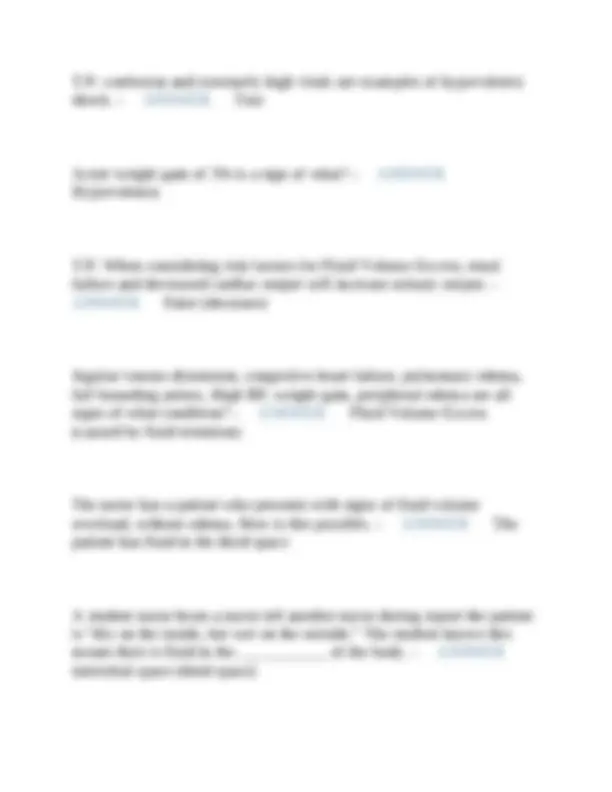
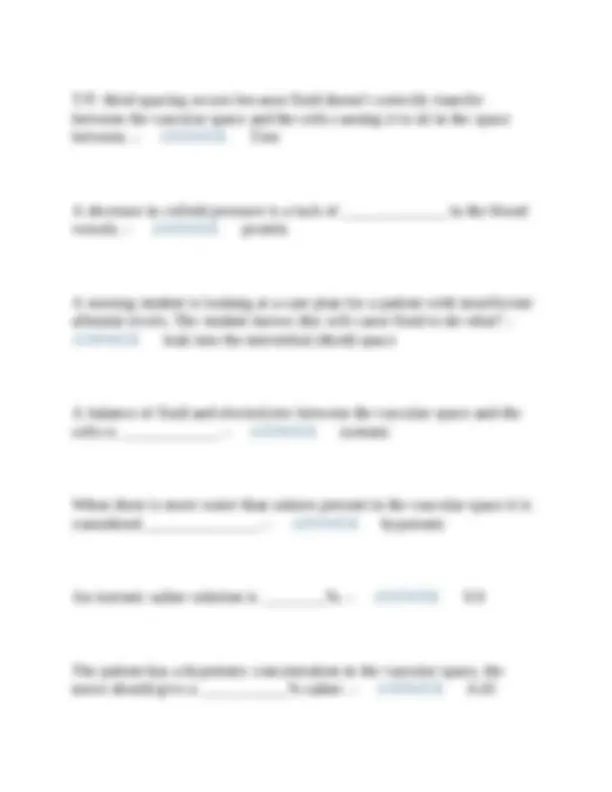
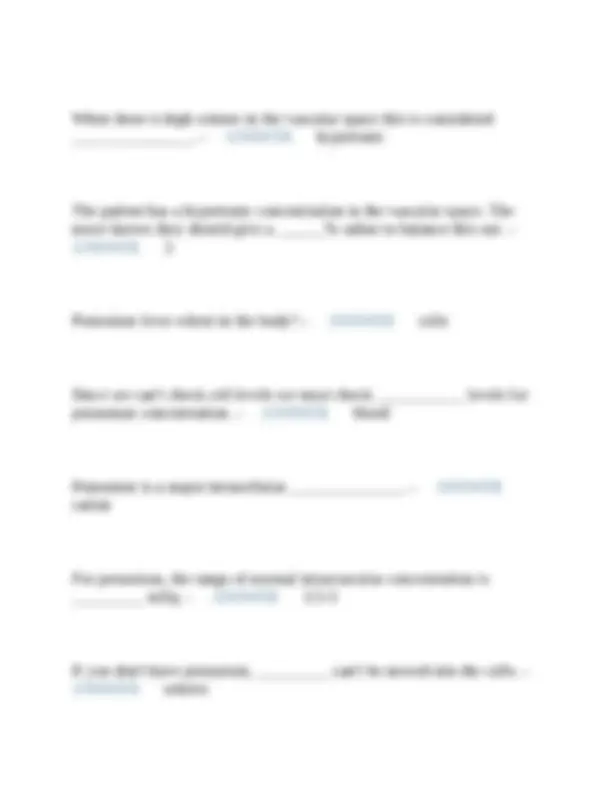
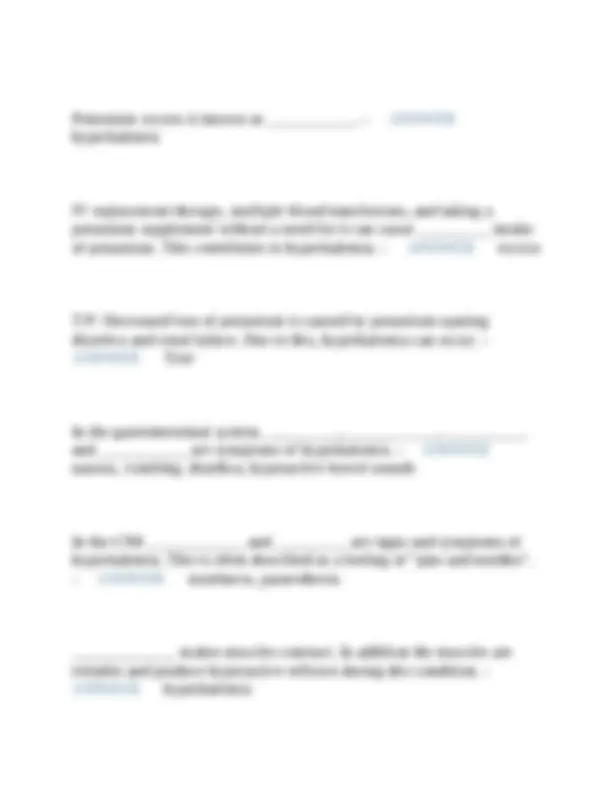
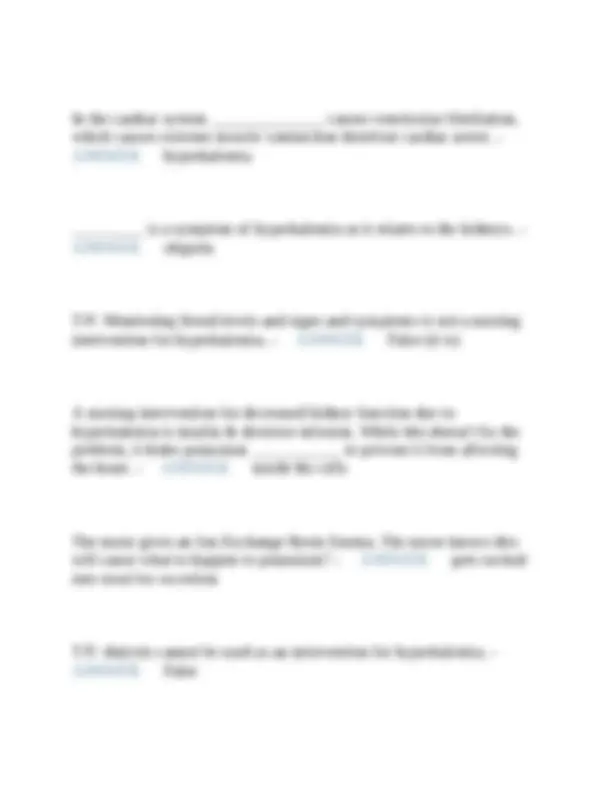
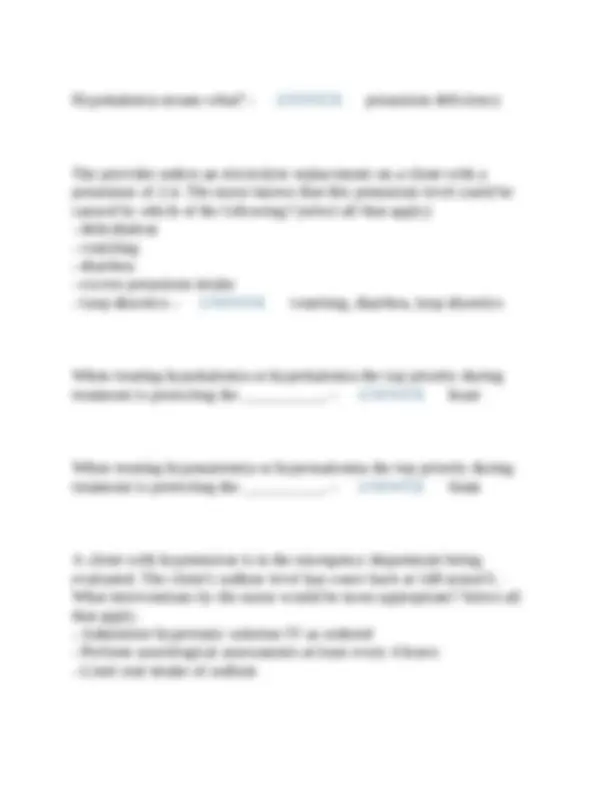
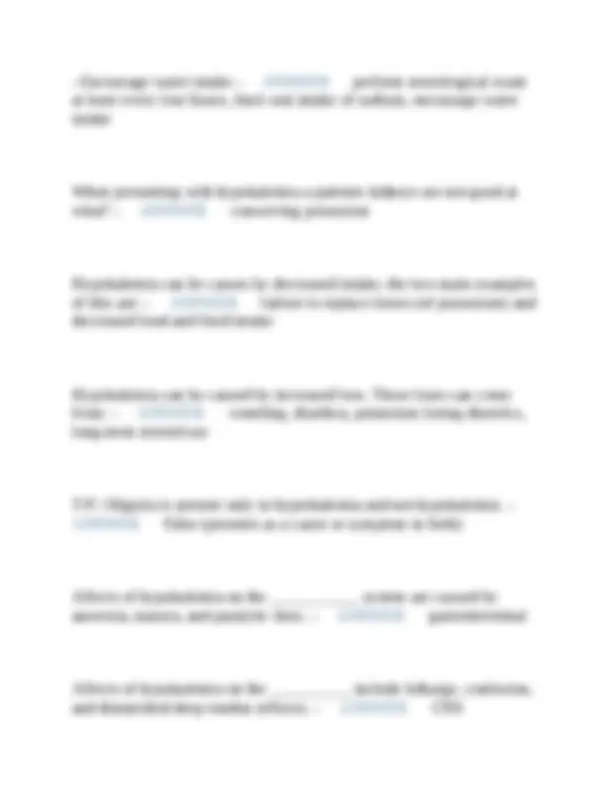
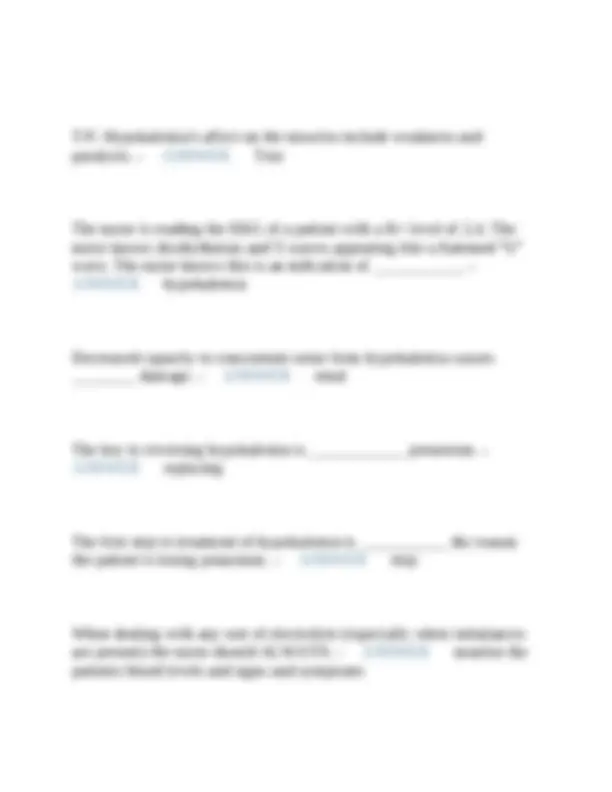
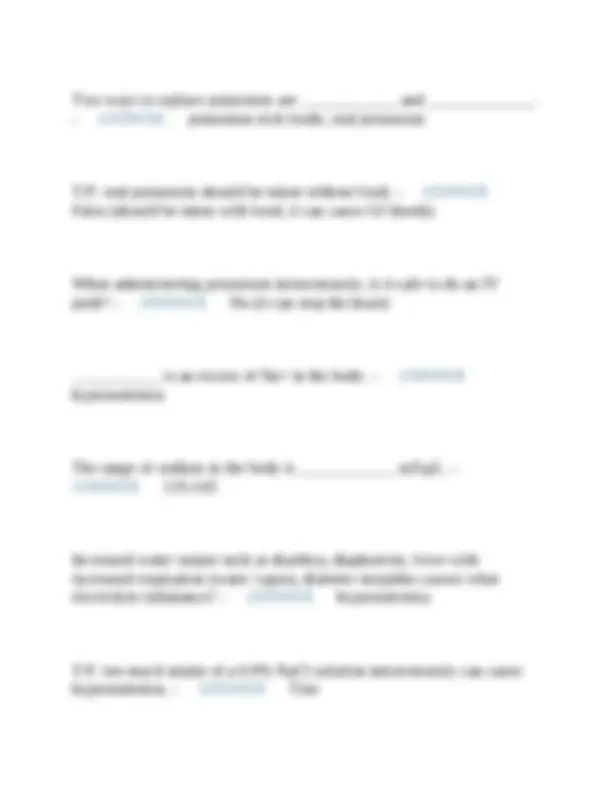
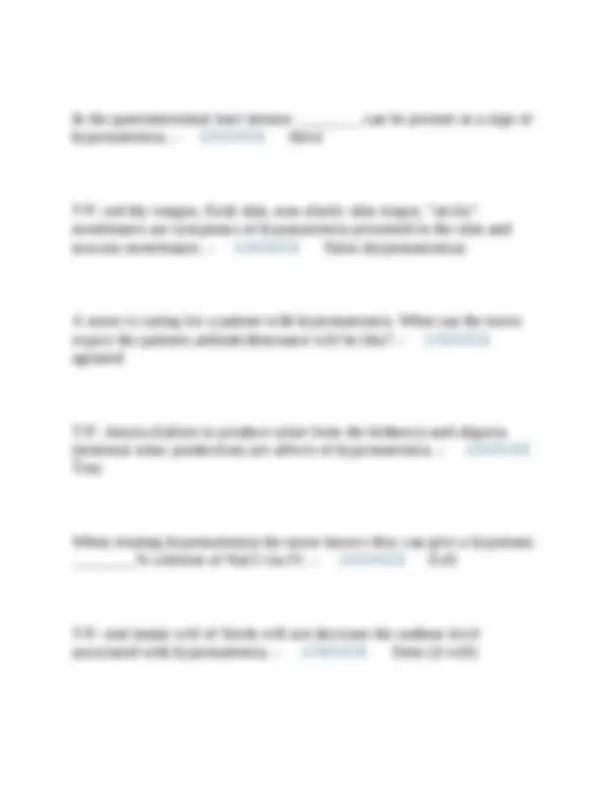
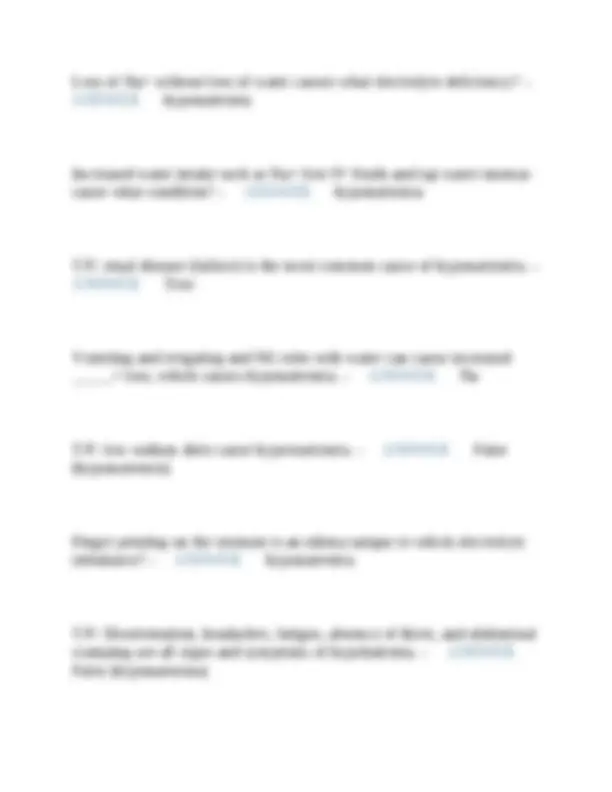
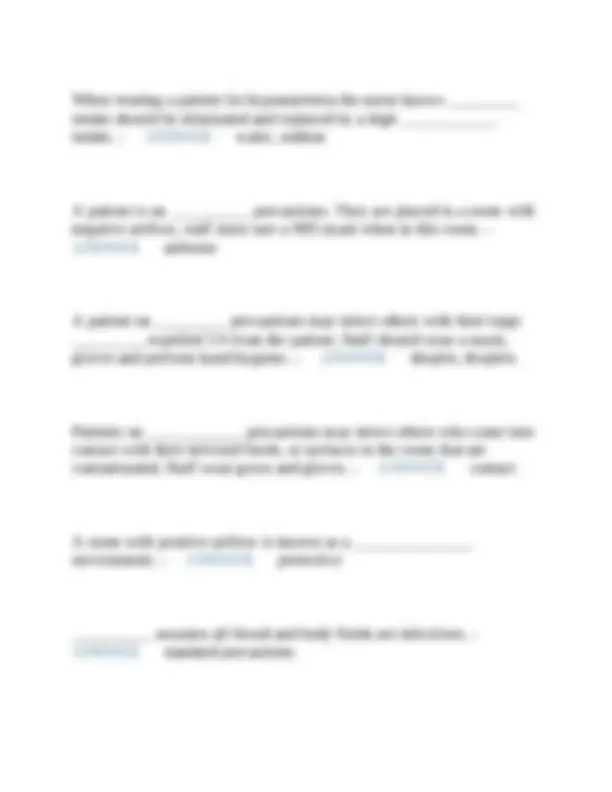
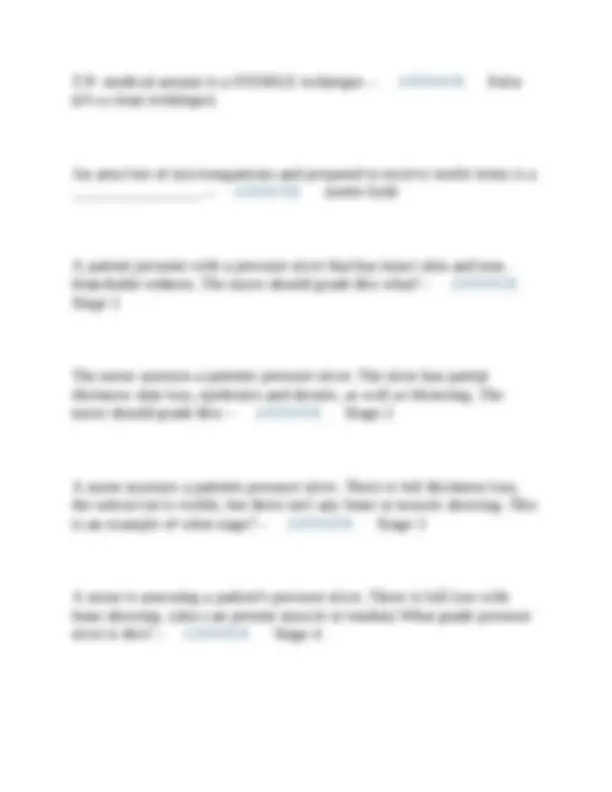
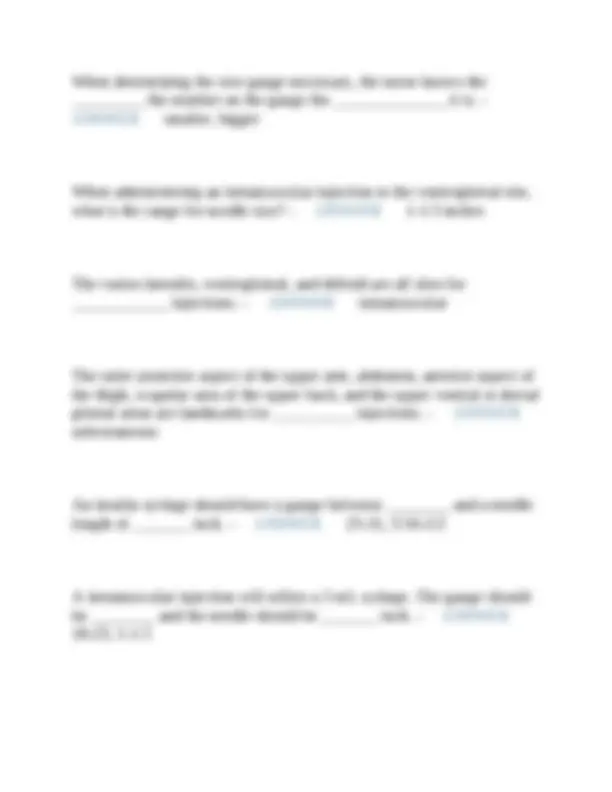
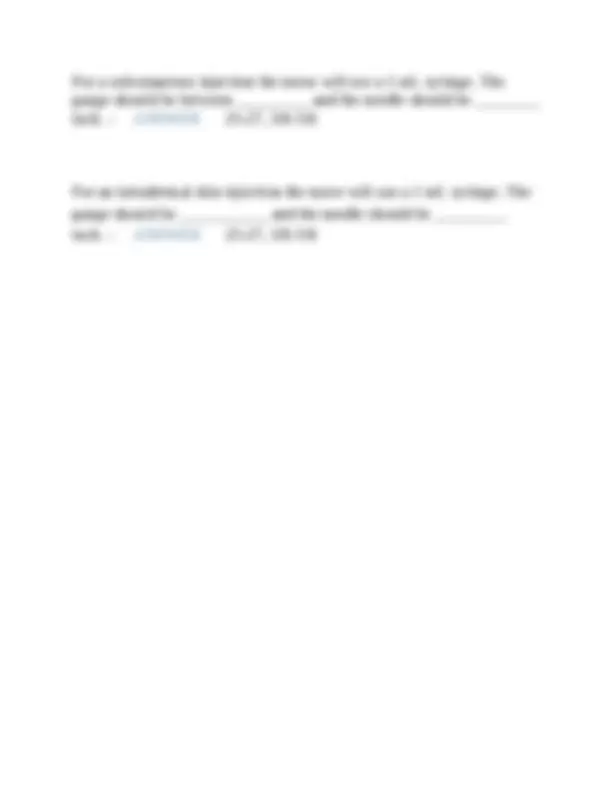


Study with the several resources on Docsity

Earn points by helping other students or get them with a premium plan


Prepare for your exams
Study with the several resources on Docsity

Earn points to download
Earn points by helping other students or get them with a premium plan
Community
Ask the community for help and clear up your study doubts
Discover the best universities in your country according to Docsity users
Free resources
Download our free guides on studying techniques, anxiety management strategies, and thesis advice from Docsity tutors
A comprehensive set of questions and verified answers related to the principles of pharmacology, specifically focusing on the autonomic nervous system (ans). It covers key concepts such as sympathetic and parasympathetic responses, adrenergic and cholinergic agents, and their effects on various body systems including cardiac, respiratory, and peripheral vascular systems. Additionally, it addresses side effects, nursing considerations, and antibiotic usage, making it a valuable resource for nursing students preparing for exams. The material is presented in a question-and-answer format, facilitating quick review and comprehension of essential pharmacological principles. It also touches on infection control and antibiotic resistance, highlighting the importance of proper antibiotic administration and patient education. Designed to aid in exam preparation and reinforce understanding of core pharmacology concepts.
Typology: Exams
1 / 46

This page cannot be seen from the preview
Don't miss anything!







































What are the two systems of the ANS? - ANSWER sympathetic and parasympathetic What response does the Sympathetic Nervous System stimulate? - ANSWER Fight or Flight response What response does the Parasympathetic Nervous System stimulate? - ANSWER Rest and Digest Andregenic Agents can also be known as _____________. - ANSWER symapthomometics The Beta 1 receptor controls what body system? - ANSWER Cardiac (heart)
What response in the heart is caused by stimulation of the Beta 1 receptor? - ANSWER Makes it beat faster and stronger The Beta 2 receptor controls what body system? - ANSWER respiratory (lungs) What response in the lungs is caused by stimulation of the Beta 2 receptor? - ANSWER bronchodilation Which ANS affecting medication deals with the Sympathetic nervous system? - ANSWER Adrenergic Agents What responses are caused by the stimulation of the Alpha Receptors? - ANSWER vasodilation (perpheral vascular), pupilary dilation Nervousness, insomnia, fine muscle tremors, palpitation, tachycardia, and hypertension are all side effects of what agent? - ANSWER Adrenergic Agents What kind of medicine increases the effects of the Parasympathetic Nervous System? - ANSWER Cholinergic Agents
What affect do Cholinergic Agents have on the colon? - ANSWER Stimulates peristalis (relaxes) What affect do Cholinergic Agents have on the bladder? - ANSWER increases bladder tone (helps urination) What affect do Cholinergic Agents on the eyes? - ANSWER pupillary constriction, decreased intraocular pressure Diarrhea, frequent urination, and blurred distance vision are all side effects of which agent? - ANSWER Cholinergic Agents What medicine blocks the Parasympathetic Nervous System and doesn't stimulate the Sympathetic Nervous System? (aka a Cholinergic Blocker)
What affect do Anticholinergic Agents have on the cardiac system? - ANSWER mild increase in pulse rate What affect do anticholinergic agents have on the respiratory system? - ANSWER mild bronchial dilator T/F: Anticholinergic Agents are used as a treatment for conditions requiring total bronchodilation. - ANSWER False What affect do Anticholinergic Agents have on the mucous membranes?
What WBC type appears late in the inflammatory process and with chronic inflammation? - ANSWER lymphocytes What WBC is known for digesting things? - ANSWER monocytes The nurse recieves paper charting that claims there was a "shift to the left" in the Complete Blood Count (CBC) w/ WBC differetial. The nurse knows this means: - ANSWER There has been an increase in neutrophils indicating an infection What is the purpose of bone marrow producing bands? - ANSWER Bands of WBCs are produced to create as many WBCs as possible to fight the infection The nurse notes redness, warmth, edema, and pain around a cut. The nurse knows this is an example of a ________ reaction. - ANSWER local reaction A reaction throughout an entire body system is known as a ___________. - ANSWER systemic reaction
Leukocytosis (increased WBCs), fatigue, fever, enlarged lymphnodes, and confusion in elderly patients are all symptoms of a __________________________. - ANSWER systemic reaction A healthy (non-immunocompromised) individual presents symptoms of an infection following a procedure. The nurse knows most noscocomial infections in health individuals come from _____________. - ANSWER invasive procedures How can a health care asccoicated infection be transmitted through an antibiotic? - ANSWER incorrect or inappropriate administration A nursing student knows both _______ and ____________ populations can be compromised hosts due to age. - ANSWER newborn and elderly T/F: Nutritional deficiencies can lead to higher susceptiblilty of infection. - ANSWER True T/F: A healthcare providers failure to adhere to infection and prevetion control activities (PPE, infection control guidelines, etc.) can lead to patient infection. - ANSWER True
A ________________ antibiotic kills bacteria by breaking open the cell wall of germs. - ANSWER baceriocidal A ___________ antibiotic limits the growth of bacteria so the body processes can eliminate them. - ANSWER bacteriostatic The nurse is giving antibiotics for gram-negative bugs. The nurse knows that killing gram-negative bugs is ______ than gram-positive due to an extra layer on the gram-negative cell wall. - ANSWER harder T/F: a culture should be obtained AFTER starting the antibiotic. - ANSWER False (obtaining a culture after antibiotic administration will result in the issue being masked) The nurse is administering antibiotics to a patient. The order states that the antibiotic should be given TID. The nurse knows that it is important to administer an antibiotic at regular intervals to ensure even distribution. This being said, the nurse should give it q ____ h. (this is allegedly a test question per Rayman) - ANSWER 8 When educating a patient about antibiotic use, it is important for the nurse to stress the importance of ________________ even after symptoms subside. Not doing so can lead to reinfection or antibiotic resistance. - ANSWER taking all of it
When giving a broad spectrum antibiotic it's important to monitior for a __________ or a secondary infection. - ANSWER suprainfection T/F: The interaction between oral contraceptives and antibiotics can block the effectiveness of the contraceptive. - ANSWER True The nursing student knows that all forms of __________ because the end in the suffix -illin. - ANSWER penicillin T/F: Penicllin is baceriostatic. - ANSWER False (bactericidal) T/F: Penicillin is prone to bacterial resistance. - ANSWER True (it's been around for a long time) T/F: Penicillin has a high prevelance of allergic reactions. - ANSWER True T/F: Penicillin should be taken with food. - ANSWER False (patient should take on an empty stomach q 1 h ac)
A nursing student is identifying Cephalsporins, the student knows that all forms begin with the prefix _________. - ANSWER Cef- There are ______ generations of Cephalsporins. - ANSWER 4 The nurse knows that cephalsporins can penetrate the extra layer on a gram-negative bug, making them ____________. - ANSWER bactericidal Allergic reactions, bleeding, thrombophelbitis are all ADRs of which antibiotic? - ANSWER Cephalosporins The first generation cephalosporins combat gram-__________ bacteria, and are _________ spectrum. - ANSWER postive, broad Second genertion cephalosprins combat gram-_________ and some gram-______________ bacteria. They are _____________ spectrum. - ANSWER positive, negative, broad
Cephalosporins can penetrate ___________ an extra envelope on gram- negative bacteria. - ANSWER beta-lactamase Third generation cephalosporins combat gram-___________ and some gram-_____________ bacteria. They are _________ spectrum. - ANSWER negative, positive, broad Fourth generation cephalosporins combat gram-___________ bacteria and are _____________ spectrum. - ANSWER negative, broad T/F: Third generation cephalosporins can enter the cerebrospinal fluid. - ANSWER True T/F: Fourth generation cephalosporins cannot enter the cerebrospinal fluid. - ANSWER False T/F: Cephalosporins are similar in structure to penicillins. - ANSWER True A patient has been prescribed tetracyclines, the nurse knows these are ___________ spectrum. - ANSWER broad
The nurse knows due to ___________ or sensitivity to light/sun, patients should be educated on sun protection measures when taking tetracyclines. - ANSWER photosensitivity What population are tetracyclines contraindicated in? - ANSWER pregnant women, nursing women, and children under 8 years (remember the acronym PNC) Tetracylines can ___________ childrens permenant teeth. - ANSWER discolor Tetracyclines can _________ women's bones. - ANSWER weaken A patient taking tetracyclines also wears contact lenses. The patient tells the nurse that they are experiencing unusual colored vision. The nurse knows this is because tetracyclines: - ANSWER stain contact lenses A nursing student is identifying different types of tetracyclines. The student knows they can identify these by the suffix ____________. - ANSWER -cyclines
_____________ in patients with liver injuries. - ANSWER kidney failure T/F: gastrointestinal issues are an ADR of macrolides. - ANSWER True A client comes to the office because of side effects of their prescription for tetracycline. The nurse would expect to see which of the following on assessment?
A client is being prescribed a tetracycline and asks the nurse about names of tetracycline medications. The nurse knows that which of the following medications is NOT a tetracycline?